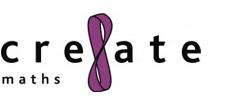Nets and circles in engineering
A collection of resources to provide ideas for setting nets and circles in the context of engineering.
'Building a Town' invites students to construct nets of buildings in their area. There are also opportunities to use circles in relation to buildings with a conical roof.
There are two supporting resources. 'Nets' contains 19 probing questions related to nets, and would be ideal to use prior to the 'Building a Town' activity. 'Circles' contains six activities for use in the classroom that explore properties of circles. This would be ideal to use prior to the conical roof sections part of the 'Building a Town' activity.
- ALL
- Activity sheet
Activity sheet
Building a Town
In Building a town, from Cre8ate maths, students are encouraged to consider the mathematical shapes which form the net of a building. Some simple models are shown and students could use these to construct their nets, before building the models themselves.
This activity could be extended so that students produce models of buildings from their area. Buildings with sloping roofs will offer opportunities for experimenting, measuring, or applying Pythagoras’ theorem, in order to draw accurate nets, while conical roofs could provide opportunities to work with the formula for the circumference of a circle.
3D Solids and Nets
This resource consists of 19 instant maths ideas, ideal for use as starter questions, extension question or probing questions to assess understanding, requiring students to:
* name different solids
* explore the cross sections of different solids leading to a definition of a prism
* investigate polyhedral
* draw two dimensional representations of three dimensional objects
* explore the symmetry of three dimensional objects
* state whether nets can folded in to a cube shape
* calculate the shortest distance between the opposite corners of a cube when travelling along the faces of the cube.
Students are asked to draw the net of a dice and design a shape sorter.
Circles
This resource contains six activities for use in the classroom when exploring the properties of circles.
The Circle: Contains a variety of questions requiring students to calculate the circumference and the area of circles. Given values for the diameter or radius of the circle. The second section contains questions requiring students to find the diameter or the radius given the circumference or the area. The third section has problems set in context.
Drawing Circles: Begins by defining the radius, diameter and circumference and asking students to draw circles with a given radius, circumference or area. The following section is more challenging requiring students to draw two circles with the same centre, one property of each circle being given.
The Annulus: the shape formed between two circles. Students explore the properties of the annulus by completing a table with values of pertaining to the properties of the inner circle, the outer circle and the annulus.
Circles 2: Contains a series of questions set in a variety of contexts.
Sectors: Begins by defining major and minor sector, and explaining how to calculate the arc length and the area of a sector of a circle. Students are then required to complete a table of values of properties of a circle and a sector of that circle given different properties from which to start with.
Circles 3: Contains further questions set in a variety of contexts.



